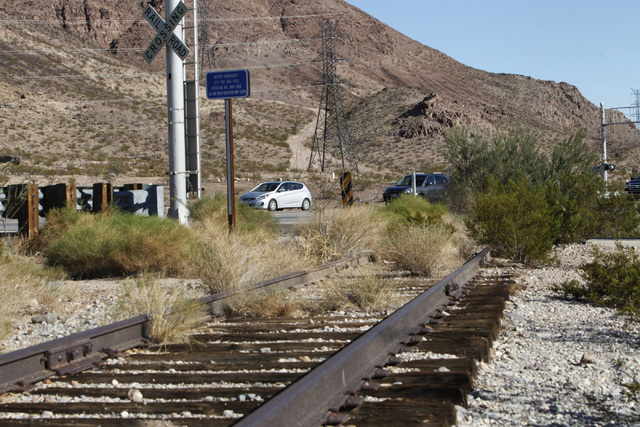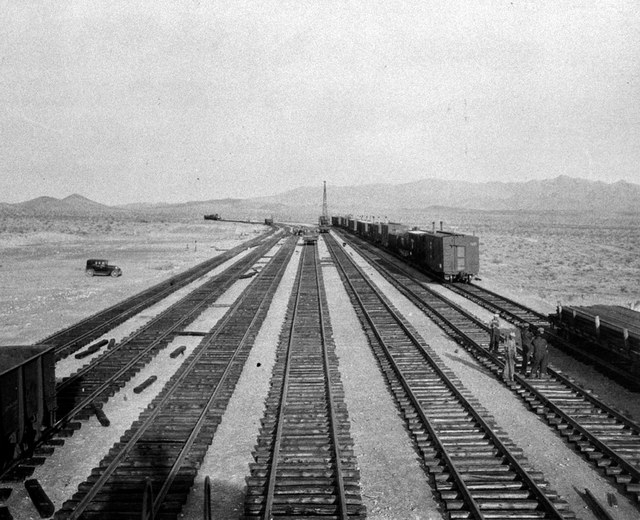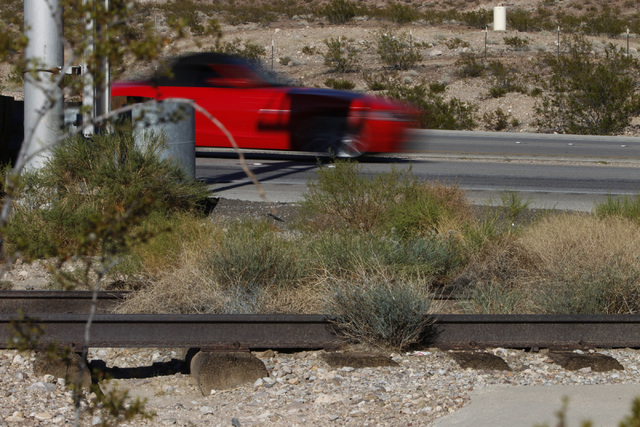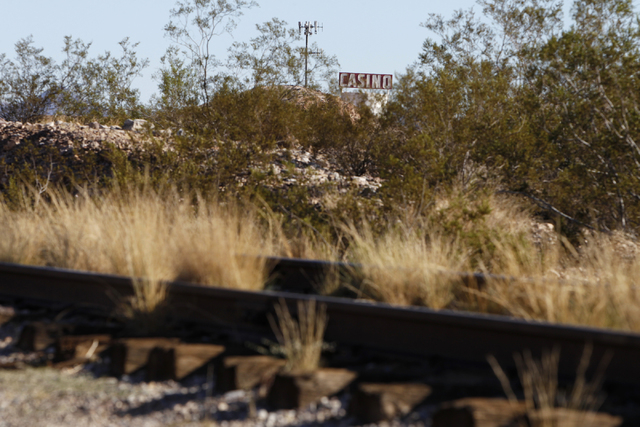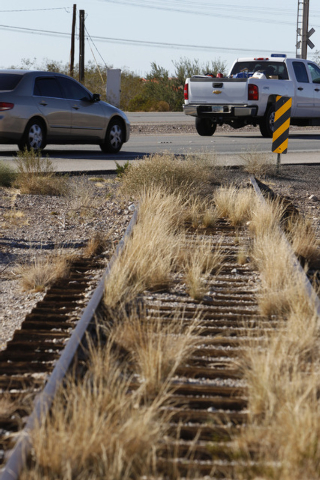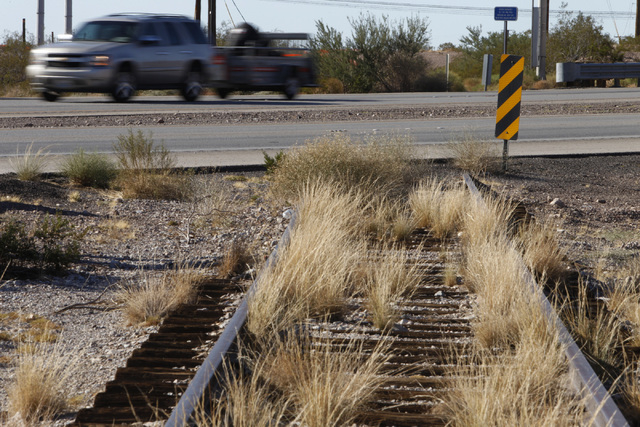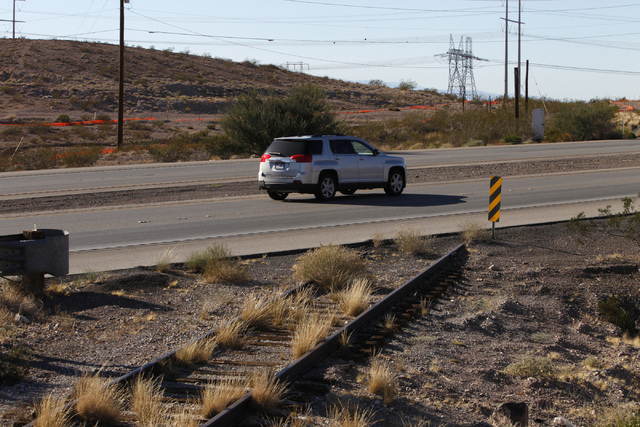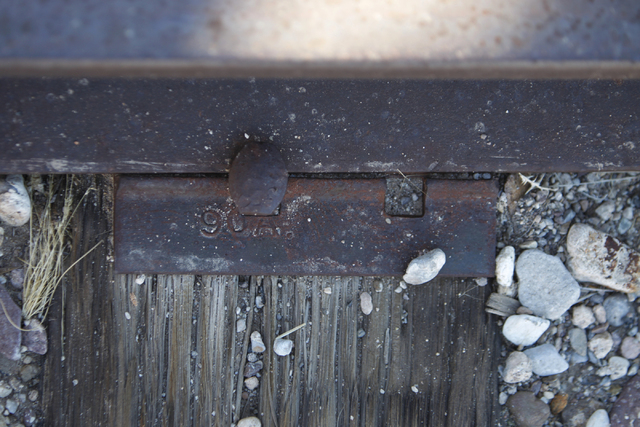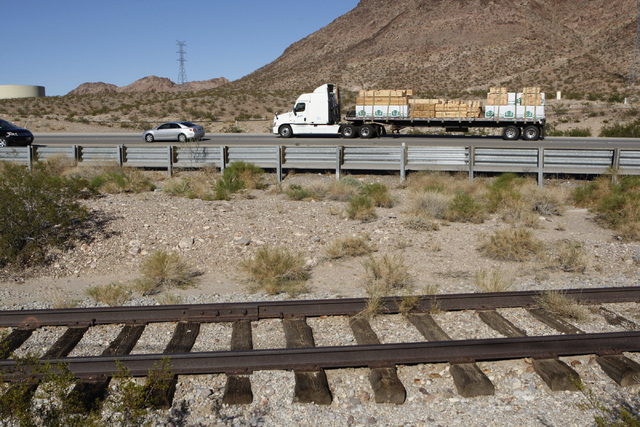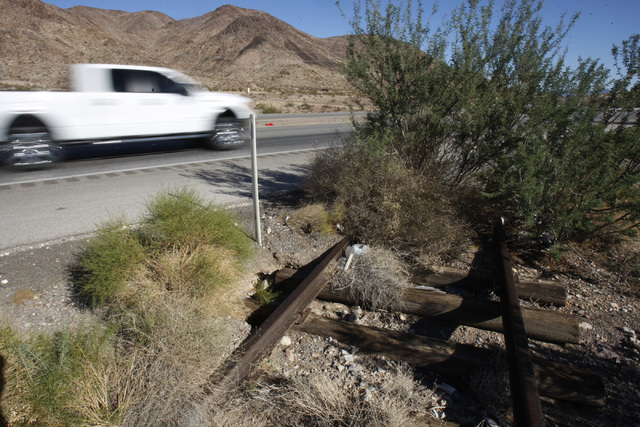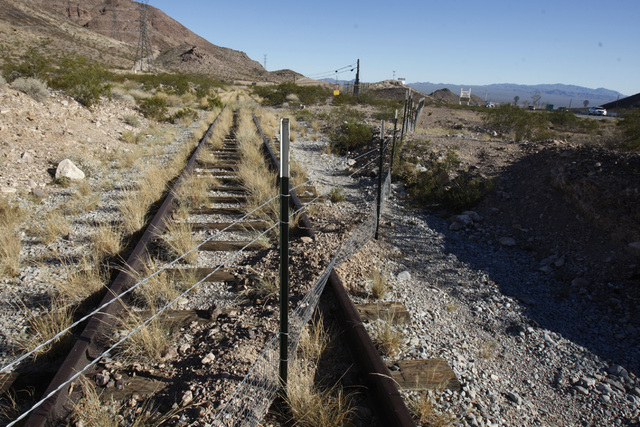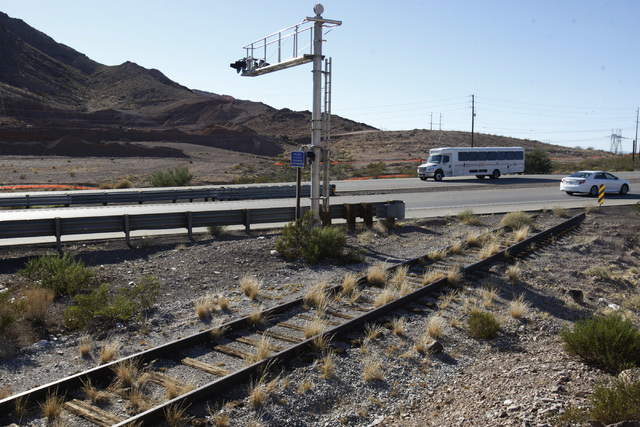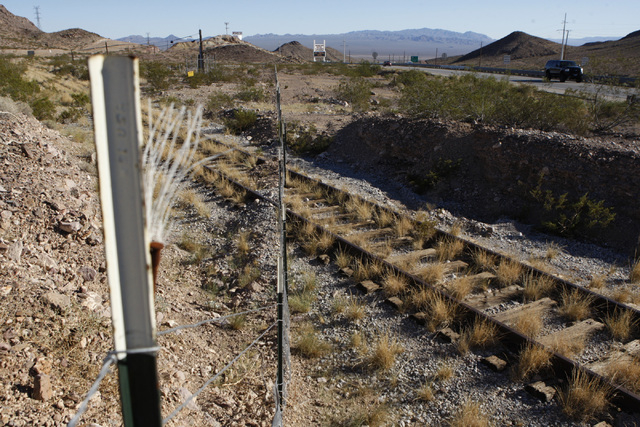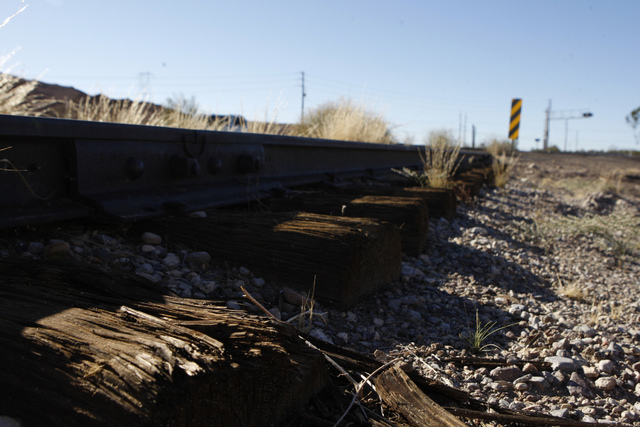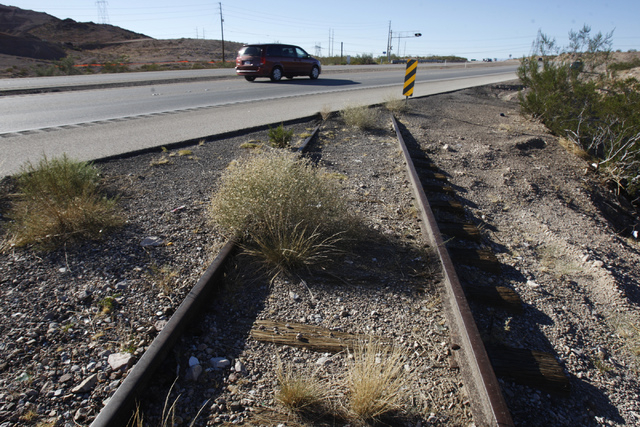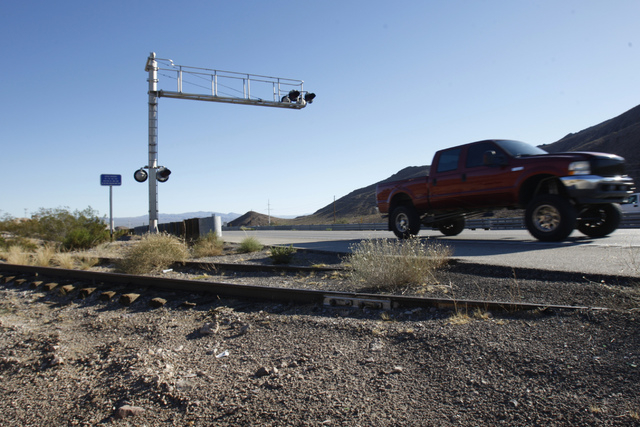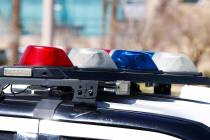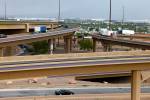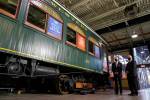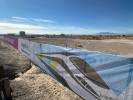Boulder rail line extension part of I-11 project
Ever since engineers first began drawing lines on maps delineating where Interstate 11 would go in Southern Nevada, the focus has been on truck and automobile transportation on the state’s highway system.
It turns out that rail aficionados will have something to cheer about when workers contracted by the Nevada Transportation Department begin construction of the new freeway next spring.
The Boulder Branch railroad line, a 22-mile spur that veers off the main Union Pacific line near Russell Road in Las Vegas south through Henderson, will be restored to Boulder City as part of the I-11 project.
The line was severed in 1998 when tracks at a grade crossing on U.S. Highway 95 near the Railroad Pass casino were paved over.
Two bridges, one for pedestrians and one for the railroad track, are a part of the I-11 project.
To Greg Corbin, director of the Nevada State Railroad Museum in Carson City, it’s the fulfillment of a long-held promise to restore the line all the way to Boulder City.
“To finally see this all come together is really satisfying,” said Corbin, who called the bridge the single most important project for the Nevada Southern Railroad Museum in Boulder City.
The restoration of the Boulder Branch line is a part of the Transportation Department’s Nevada State Rail Plan published in March 2012. The rails on the southern portion of the line that end in Boulder City carry weekend excursion trips four times a day every Saturday and Sunday.
Tourists pay $10 a ticket ($5 for children) to take the 4-mile, 40-minute trip out and back to Railroad Pass from Boulder City. Since there’s no place to turn the train around, it chugs up a slight grade to the pass, then rolls back into Boulder City.
It’s one of three historic excursion trains in the state. The Nevada Northern Railway Museum and the White Pine Historical Railroad Foundation operate a train between Ely and McGill and the Virginia &Truckee Railroad runs from a depot east of Carson City to Virginia City.
BOULDER BRANCH HISTORY
The Boulder Branch tracks didn’t always carry tourists.
The line was built by the Union Pacific Railroad in 1930 and completed in 1931 to transport people, supplies and equipment for what was known then as the Boulder Canyon Project, later called Boulder Dam and then Hoover Dam.
The track extended all the way to what is now the Alan Bible Visitor Center of Lake Mead National Recreation Area. There, the line split with the “Low Mix” route crossing the Colorado River to a quarry in Arizona and the “High Mix” going to the dam site by way of five tunnels blasted through rock hills.
Once the dam was completed in 1935, the Low Mix route was decommissioned and covered over by Lake Mead while the High Mix route stayed active until 1961 when the last generator was delivered to the dam.
Today, the High Mix right of way is preserved as a walking trail.
After 1961, the construction line was decommissioned, but the tracks originally installed by Union Pacific were kept until 1985 when the railroad donated the land to the state for the museum and to the city of Henderson, which maintains the line north of the break.
The museum built a maintenance facility in 1996 and a train station platform in 2000.
The excursion train made its first run as a “Santa Train” in 2002. Only a few hundred people rode the train in the early days. Now in its 13th year of operation, the train carries about 43,000 passengers a year.
PROJECT DETAILS
In the big picture of the I-11 Boulder City Bypass, the Transportation Department’s chunk of the work is a fraction of the whole project — and it recently shrank some.
The bypass will be a 12-mile, four-lane freeway that will wrap around the southern side of Boulder City from the Eldorado Mountains near the O’Callaghan-Tillman Memorial Bridge over the Colorado River to Railroad Pass where U.S. 95 and 93 become designated as Interstate 515.
The 12 miles are being built in concurrent phases with the Transportation Department responsible for 2 miles on the northern end and the Regional Transportation Commission of Southern Nevada doing 10 miles on the southern end. The split in responsibilities will expedite the project and keep costs down because the commission’s end can be paid with fuel tax indexing dollars since the land is within the Boulder City limits. The Transportation Department’s side is being paid for with federal and state transportation funds.
The Transportation Department’s phase was once 2½ miles from where the route crossed U.S. Highway 93 to Railroad Pass. That recently was reduced to 2 miles with the dividing line at Silver Line Road.
Project manager Tony Lorenzi said the change was made so that the dividing line for the project wouldn’t be right in the center of a critical highway intersection.
Lorenzi also said the state and the Federal Highway Administration encouraged keeping the railroad bridge in the project because it would be a more expensive undertaking if it was built later. The reason: The railroad bridge and the pedestrian overpass would be built over a brand new road. If the project was delayed until after motorists used the road, it would have to be built over an active highway.
Lorenzi said the engineering design calls for the I-11 road base to be cut below grade. That means there won’t have to be any modifications to the railroad line grade and pedestrians won’t have to climb ramps or spirals to cross over the highway.
The pedestrian bridge is a project brought to Lorenzi and the state by the city of Henderson which applied for and received a $2 million federal Congestion Mitigation and Air Quality grant to build it. The bridge will connect the River Mountains Loop Trail with the Union Pacific Railroad Trail enhancing the region’s extensive bicycle and hiking trail system.
Lorenzi said the state will issue a request for qualifications at the end of October and open bids in mid-December. The state is anticipating a contract of between $86 million and $90 million for its phase. If all goes according to plan, work would begin on the project by spring.
LOOKING TO THE FUTURE
So what’s on the horizon for the railroad line? Corbin said there are all kinds of possibilities.
“One of the things we’d really like to see is the extension of the Boulder line,” said Corbin, who oversaw the Boulder City museum for 16 years before taking the state leadership role in Carson City earlier this year.
“You know that view that you get of Las Vegas when you come over Railroad Pass? That’s what we want for our passengers,” he said.
Corbin said extending the excursion a few miles would provide enough time to develop a dinner train ride, a popular attraction on other excursion lines.
Reopening the line between the Union Pacific’s main line and Boulder City would enable the Boulder City Museum to enhance its collection of rail memorabilia.
“A lot of donations to museums are contingent upon there being a rail line to transport it,” Corbin said. “If there was something we wanted badly enough, we could transport things by truck but sometimes the expense of cranes and trucks makes accepting these donations unfeasible.”
Reconnecting the line also makes it possible for occasional rail treasures to be put on display in an appropriate venue.
For example, the Union Pacific brought the Big Boy No. 4014 steam engine to Las Vegas in April. The locomotive was parked for a few hours in downtown Las Vegas, but it wasn’t on display in an area that was easy for rail buffs to access.
Henderson City Engineer Ed McGuire said extension of the line also opens some possibilities for sightseeing and dinner excursions with Henderson as the centerpiece.
McGuire said Henderson still owns and maintains the tracks since they were donated by Union Pacific. The Boulder Branch spur continues to be used for freight deliveries to and from Henderson companies.
Trains make regular runs to Berry Plastics, a manufacturer of plastic cups, packaging, flexible films, tapes and corrosion protection products, and Poly-West, which manufactures and recycles polyethylene trash bags.
The state’s rail plan also lists a proposal from the Pullman Palace Car Co. to someday establish a public-private partnership with Henderson, Boulder City, Clark County and the state to develop and operate a hybrid commuter-tourist train as well as a nightly luxury dinner train operating from a station near the south end of the Strip to Boulder City.
Could the line someday support a light-rail commuter train?
Colton and McGuire agree that if it ever occurs, it’s likely to be years into the future.
“Right now, I just want to focus on extending the line a little and getting our passengers to a place where they can take in that spectacular view,” Corbin said.
“A lot of great cities have light rail and the RTC (Regional Transportation Commission) has looked at light rail, but it’s expensive and bus rapid transit seems to be our right-now opportunity,” McGuire said. “But that’s one of the reasons why we decided to maintain the tracks, in case things change.
“We definitely never say never.”
Contact Richard N. Velotta at rvelotta@reviewjournal.com or 702-477-3893. Find him on Twitter: @RickVelotta.



